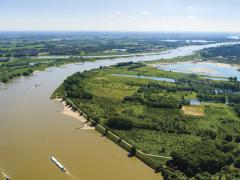Quantifying Biodiversity Losses Due to Human Consumption: A Global-Scale Footprint Analysis
It is increasingly recognized that human consumption leads to considerable losses of biodiversity. This study systematically quantifies these losses in relation to land use and greenhouse gas (GHG) emissions associated with the production and consumption of (inter)nationally traded goods and services by presenting biodiversity footprints for 45 countries and world regions.
Our results showed that
(i) the biodiversity loss per citizen shows large variations among countries, with higher values when per-capita income increases;
(ii) the share of biodiversity losses due to GHG emissions in the biodiversity footprint increases with income;
(iii) food consumption is the most important driver of biodiversity loss in most of the countries and regions, with a global average of 40%;
(iv) more than 50% of the biodiversity loss associated with consumption in developed economies occurs outside their territorial boundaries; and
(v) the biodiversity footprint per dollar consumed is lower for wealthier countries.
The insights provided by our analysis might support policymakers in developing adequate responses to avert further losses of biodiversity when population and incomes increase. Both the mitigation of GHG emissions and land use related reduction options in production and consumption should be considered in strategies to protect global biodiversity.
Authors
Specifications
- Publication title
- Quantifying Biodiversity Losses Due to Human Consumption: A Global-Scale Footprint Analysis
- Publication date
- 30 January 2017
- Publication type
- Publication
- Magazine
- Environmental Science & Technology
- Product number
- 1801




